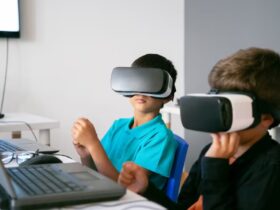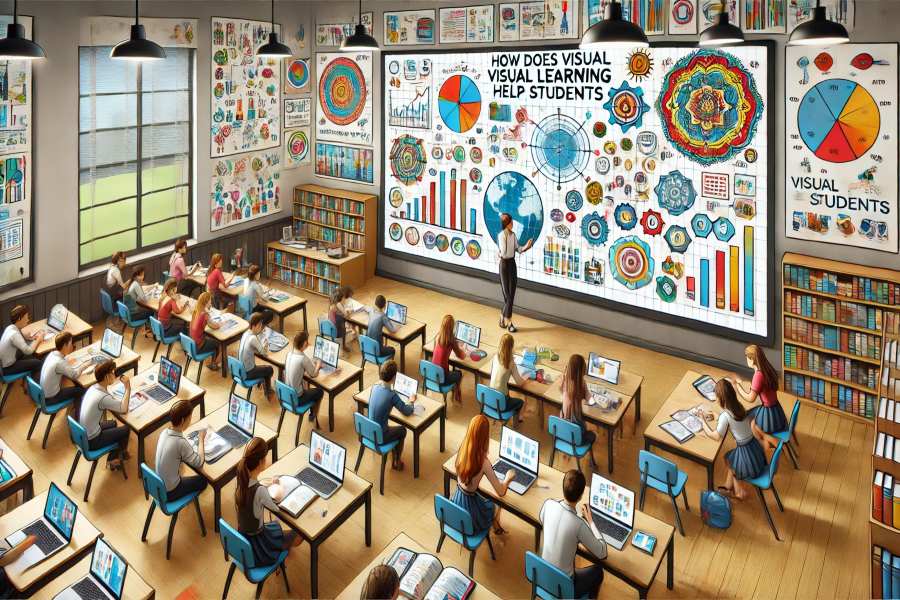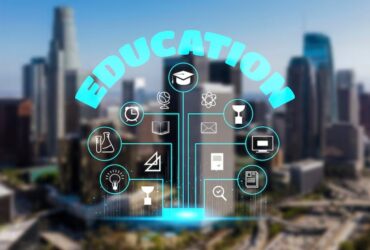With a powerful, impactful tool, visual learning works wonders on the grasping and retention of information by students. This method will come with or integrate design elements like images, diagrams, charts, and videos for enhancing understanding and better retention. Not only has incorporating technology into the classroom further opened up visual learning, but it is more effective than ever. In this article, we’ll cover how visual learning helps students, including the advantages and real-world applications, and then delve deeper into the science behind why it works. Teachers and students are better positioned to understand the power of visual learning for better outcomes and a more enjoyable experience in education.
How Does Visual Learning Help Students?
Visual learning helps students develop their potential for retaining and understanding information with the help of visual aids such as images, diagrams, and videos. Learning using this tactic exploits the brain’s inclination toward visual material, hence making otherwise really complex subjects very conceivable and memorable.
How Visual Learning Precipitates Student Engagement
The impact of visual learning on the students’ engagement is huge. The inclusion of visual elements in a lesson makes it possible to capture students’ interest and eventually creates interactivity in learning. Pictures, videos, and diagrams might compress information that would have otherwise become difficult, thus condensing it for easy digestion by the learner.
This approach improves comprehension, motivation, and interest in the subject matter. If they are engaged, then they will participate more in class discussions and activities, which reinforces further learning. This also addresses different learning styles so that the visual learners among them may absorb information better. The visual aids, through the use of color, shapes, and patterns, may create a sense of curiosity, and imagination about what is being taught to them, hence making it a much more enjoyable experience to learn and remember.
A visually rich learning environment established within a class would yield just that: an integral understanding of the subject at hand through a closer connection between students and the material.
The Science Behind Visual Learning
1. Cognitive Benefits
Visual learning provokes the brain’s capacity for fast and efficient processing of visual information. It has been shown that the human brain can process images up to a speed 60,000 times faster than text. The fast velocity at which data is processed enables the student to grasp and hold onto that particular information.
2. Memory Retention
Visual aids enhance memory retention. In case students see information in chart or diagram form, they are likely to remember. This is explained by the fact that visual learning has the aspect of activating multiple areas of the brain, hence increasing encoding and a rise in information retrieval.
3. Visual Learning Styles
Since different students learn differently, the implication is that visual learners respond best to visual aids. For instance, some learners understand issues better when they are presented in images or videos and not just words. Therefore, incorporating visual elements into lessons would help meet the needs of such students.
4. Improved Comprehension
Visual aids simplify complex concepts. For example, diagrams and flowcharts can explain a long and complicated process in steps. In this way, the student can more easily grasp the material and understand it, which helps in better performance in academics.
5. Incorporation of Technology
Visual learning was further enhanced with the integration of technology into education. Interactive whiteboards, educational apps, and online videos offer lively and interactive visual content that can support such traditional teaching methods.
Practical Applications Of Visual Learning
Visual learning techniques can be applied in different educational contexts to enhance student learning.
- Classroom Presentations: Use PowerPoint slides with images and graphs for key presentation purposes. Videos elaborating sophisticated concepts. Relations and processes explained through diagrams
- Interactive Learning Tools: Educational apps using visual content to teach mathematics and science. Virtual reality experiences for students to explore in 3D through subjects. Online platforms providing interactive simulations and visualizations
- Study Techniques: Organizing and visualizing information by creating mind maps. Vocabulary building by preparing flashcards with images. Diagrams to summarize and review study material
Challenges And Considerations In Visual Learning
Though visual learning has several advantages, it also involves some associated challenges and factors to be considered. One such major challenge is control over the usage of visual aids and how they overwhelm a student. Too much visual information is distracting and interferes with the learning process. A teacher has to balance the use of visuals with traditional teaching means so as not to lose their students’ attention.
Another point to consider is the factor of access. While students may utilize visual aids in learning, there could be situations where not all students can be put on an equal platform. Schools or teachers should guarantee that no student is sidelined from accessing any resources useful for a visual learning experience. This might be attained for students who do not have the same at home by providing access to computers, tablets, or even general internet connectivity.
Finally, one has to understand that visual learning is no panacea. While it works wonderfully with most children, some may still respond better to other kinds of learning. The objective of any educator should be to ensure that the classroom environment is varied and inclusive, including multiple pedagogies to engage all children.
Strategies For Implementing Visual Learning
1. Creating a Visual Learning Environment: Setting up a visual learning-friendly classroom can be done by incorporating posters, up-to-date infographics, and educational displays that stimulate the environment and reinforce learning.
2. Integrating Technology: Technology can be brought into action in visual learning with the use of interactive whiteboards, tablets, or some educational software. These methods have dynamic ways of presenting information that is engaging.
3. Professional Development for Educators: Training teachers on how to effectively utilize visual aids and technology within the classroom setting enhances the delivery of visual learning strategies. Professional development programs can offer insight and techniques for teaching.
4. Student Involvement: Allowing the students to create visual aids for themselves, such as posters and diagrams, can engage creativity and promote learning. Because students are creating something physically, it allows them to become more actively engaged in the subject matter.
5. Measuring Efficiency: Teachers can modify their methods by assessing the outcome of visual learning on student performance in consistent intervals. It could be done through questionnaires, student feedback, and a proper analysis of academic performances.
Conclusion
It is a potent tool with the potential to positively change students’ educational experiences. The teacher uses visual aids to better engage, understand, and retain students’ memories. The more technology evolves, the greater the potential for visual learning to transform education. Adopting this methodology will enable teachers to create a more lively and efficient learning environment that caters to diverse students.
Frequently Asked Questions
1. What Is Visual Learning?
Visual learning involves using visual aids like images, diagrams, and videos to help students understand and retain information better.
2. Why Is Visual Learning Effective?
Visual learning is effective because the brain processes visual information quickly and efficiently, making it easier for students to grasp and remember concepts.
3. How Can Teachers Incorporate Visual Learning In The Classroom?
Teachers can use PowerPoint slides, videos, diagrams, and interactive tools to present information visually and engage students.
4. What Are The Benefits Of Visual Learning For Students?
Benefits include improved engagement, better understanding of complex concepts, enhanced memory retention, and catering to different learning styles.
5. Are There Any Challenges Associated With Visual Learning?
Challenges include ensuring visual aids are used effectively without overwhelming students and providing equal access to technology and resources.












































Leave a Reply